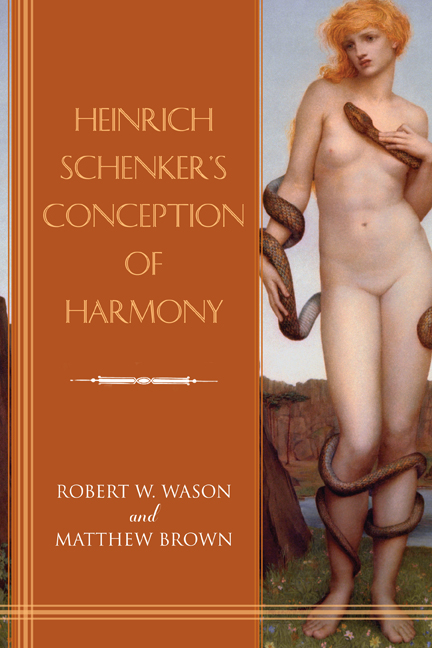5 - A “New Edition” for a New Audience and an “American Version” for a New Country: Problems of Editing and Translating Harmonielehre (1906)
Published online by Cambridge University Press: 14 October 2020
Summary
The Revised Edition of HL
Introduction
Earlier, we examined the origins of HL, showing how the book was a product, in many respects, of ideas that Schenker had originally learned while a Gymnasium student in Galicia and an aspiring lawyer at the University of Vienna. The genesis of the revised abridged edition (in English only) was far more complex, taking place over a span of nearly fifty years, across two continents. The impetus for that edition occurred in Europe, and in this chapter we discuss, first, the motivations behind it, and the problems with creating it. We then turn to the problem of language, for both the purpose and audience of the book had changed completely.
There were four main protagonists behind the movement towards a revised edition: Heinrich Schenker, Otto Vrieslander, Manfred Willfort, and Oswald Jonas. Each one of them had slightly different reasons for supporting the project: Schenker wanted to correct some mistakes in the original publication and create a version of his treatise that he could teach from; Vrieslander wanted to make the text more amenable to classroom teaching and to add some suitable written exercises; Willfort wanted to improve on Vrieslander’s abridged edition; and Jonas wanted to update Schenker's original material in light of his later thinking and to correct common misunderstandings about his theoretical ideas. The revised text not only reflects these different concerns, but it also highlights Schenker's belief in the affinity between editing and theorizing.
To show how the revised edition actually came into being, this chapter begins by winding the clock back to the first decade and a half of the twentieth century, when Schenker originally completed HL and developed his own innovative approach to editing. The focus of the chapter then shifts to Vrieslander and his twenty-year quest to produce a revised edition of Schenker’s treatise. In particular, it discusses some of Vrieslander's other editorial projects and shows how they were directly influenced by Schenker's ideas. Next, the spotlight turns to Willfort and his attempts to produce an alternative abridgement to Vrieslander’s. Finally, the discussion turns to Jonas, his version of what an introduction to Schenker's work should look like, his relationship with Schenker, his experiences as an editor, and his decision to continue Vrieslander's work after emigrating from Vienna to Chicago.
Information
- Type
- Chapter
- Information
- Heinrich Schenker's Conception of Harmony , pp. 311 - 375Publisher: Boydell & BrewerPrint publication year: 2020
